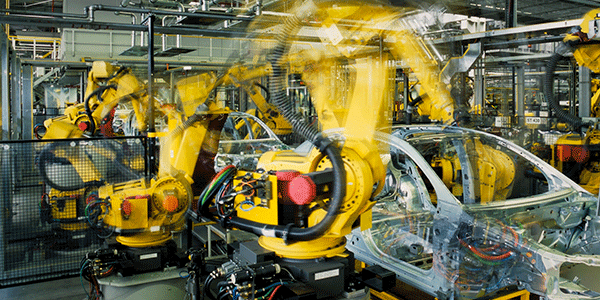Many of today’s production lines, such as those in manufacturing of electronics and containers, operate at very high speed. While implementing 3D sensors for quality control provides 100% inline inspection capability with high repeatability and micron-level accuracy, there’s another often forgotten sensor capability that is equally as important.
The heavy data loads generated in manufacturing environments means a 3D sensor has to be able to deliver real-time data processing.

Data Processing in Real-Time: Handling Large Data Volume
To be effective in a modern high speed assembly line, a sensor has to offer real-time measurement capabilities that deliver deterministic behavior. The sensor has to produce the same reliable and repeatable results, in the same amount of time, whether scanning for small or large data volumes.
Unfortunately most standard 3D sensor designs today rely on PC/Windows environments that offer no guarantee of real-time data delivery.
A 3D smart sensor, on the other hand, is built on dedicated hardware for high speed pixel processing and a real-time operating system for measurement and communication –– all of which is built right into the sensor itself. The result is that data is never “dropped” or lost, even under heavy data loads.

Challenge: Varying Network Traffic Latency
It is quite common to have multiple scanning solutions within equipment (sometimes even within a plant!) share the same networking resources. Processing speed becomes even more crucial in systems that require multiple sensors to cover a large field of view at high resolution or to inspect objects from multiple angles.
For this reason an effective sensor must have a built-in real-time data pipeline with multi-buffering capability. While most sensors require users to retrieve the last collected data within a very short time frame (something PC/Windows environments often cannot accomplish), today’s 3D smart sensors use multiple buffers of data that results in deterministic latency regardless of heavy computational load, or factors such as network traffic delays.
In addition, 3D smart sensors offer a distributed approach to handling large volumes of data, in which each sensor has its own embedded processor that maintains timing and solution performance as more sensors are added to the network.
Challenge: Varying Inspection Conditions
Variations in the inspection environment affect the reliability and repeatability of scan results. For example, there might be a gap in measurement data due to unexpected changes in ambient lighting, fluctuations in conveyor speed or a sudden movement that disrupts the object from its correct position on the assembly line. In addition, many systems can produce incorrect measurement results due to data loss or incorrectly timed data collection.
3D smart sensors compensate for these variations by leveraging powerful built-in part analysis and detection capability. They are able to analyze the time, position and data of each profile and in real-time combine these profiles to form an accurate 3D surface model of the parts being inspected.

